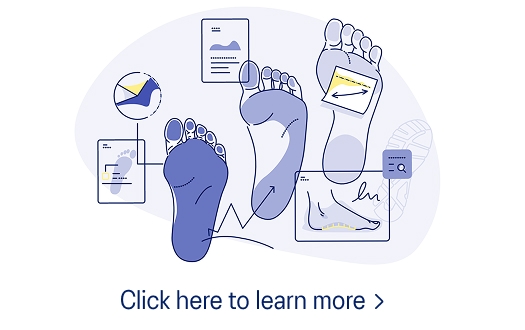Pronation Guide
WHAT IS PRONATION AND WHY DOES IT MATTER?

Pronation is part of the natural movement of the human body and refers to the way your foot rolls inward for impact distribution upon landing. Understanding your pronation type can help you find a comfortable running shoe.
- Underpronators (supinators) need a lot of cushioning to avoid strong impact
- Neutral pronators can wear a wide variety of shoes
- Overpronators should look for support or structured cushioning shoes
UNDERPRONATION
How Your Foot Contacts the Ground: outer side of the heel hits the ground at an increased angle with little or no normal pronation, causing a large transmission of shock through the lower leg.
Push Off: pressure on smaller toes on outside of foot.
Considered Injuries: plantar fasciitis, shin splints, ankle strain.
Foot type: high arches
NEUTRAL
How Your Foot Contacts the Ground: foot lands on outside of the heel, then rolls inward (pronates) to absorb shock and support body weight
Push Off: even distribution from the front of the foot.
Considered Injuries: less likely due to effective shock absorption, but neutral runners are not immune to injury.
Foot Type: normal-size arches
OVERPRONATION
How Your Foot Contacts the Ground: foot lands on outside of heel, then rolls inward (pronates) excessively, transferring weight to inner edge instead of ball of the foot
Push Off: big toe and second toe do majority of the work
Considered Injuries: shin splints, plantar fasciitis, bunions, heel spurs
Foot Type: low arches or flat feet
HOW TO DETERMINE YOUR PRONATION TYPE
TAKE A PRONATION TEST
- Video Gait Analysis: A video is taken of a runner's feet while running on a treadmill. The video footage is slowed down and analyzed in detail by an ASICS staff member who will explain your running type and help you select the right pair of running shoes.
- 3D Foot Mapping: The advanced version of video gait analysis is 3D foot mapping, which, in addition to video, uses lasers and to create a highly detailed 3D image of the foot. A range of information is obtained from the scan, such as arch height and alignment of the Achilles with the leg. This is used to determine the right running shoe and provide additional insights. 3D foot mapping is unique to ASICS and available to customers via ASICS Running Clinics or the ASICS London store, which is the only store that has the 3D foot mapping equipment in permanent residence.
- Visit An ASICS Store For Guidance: Receive individual product advice at one of our running stores. Trained staff members will be happy to assist you with fitting and special services.
CHECK YOUR WEAR PATTERNS ON YOUR SHOE
Wear patterns won't provide the full picture of gait analysis, but they can give additional clues about the impact on your feet. This can give you an idea of where you may need extra support and cushioning in your running shoes.
- For Underpronators/Supinators:
- Outside of your running shoes show the most wear
- If you put your running shoes on a flat surface, you may notice a slight outward tilt
- For Neutral Pronators:
- Soles of your running shoes show wear in an S-shaped pattern, from the outer (lateral) heel to the big toe
- If you put your shoes on a flat surface, you may not notice any tilt
- For Overpronators:
- Extra wear on the inside of the heel and under the ball of the foot, especially the big toe
- If you put your shoes on a flat surface, you may notice an inward tilt